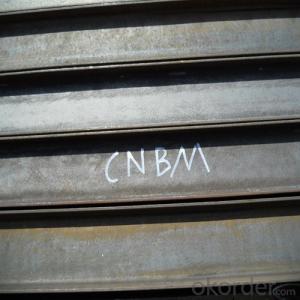Steel rebar, also known as reinforcement bars, is an essential component in the construction industry. It’s the backbone of many structures, providing strength and stability. But what exactly is steel rebar, and how does it work? Let’s dive into the world of steel rebar and explore its uses and specifications in a more personal and engaging way.
The Heart of Construction: Steel Rebar
Imagine a skyscraper reaching for the sky, or a bridge spanning a vast river. These marvels of engineering wouldn’t be possible without the strength provided by steel rebar. It’s the unsung hero of the construction world, silently doing its job to ensure our safety and comfort.
What is Steel Rebar Made Of?
Steel rebar is made from carbon steel, which is an alloy of iron and carbon. The carbon content in steel rebar typically ranges from 0.2% to 2.0%, which gives it the tensile strength needed for construction. The process of making steel rebar involves heating the steel to high temperatures, rolling it into shape, and cooling it down. This process ensures that the rebar is strong, ductile, and resistant to corrosion.
How Steel Rebar is Used in Construction
In construction, steel rebar is used to reinforce concrete. When concrete is poured around the rebar, it forms a composite material that is much stronger than either material alone. The concrete protects the rebar from corrosion, while the rebar provides the concrete with tensile strength. This combination is perfect for creating strong and durable structures.
The Many Faces of Steel Rebar
Steel rebar comes in various shapes and sizes to suit different construction needs. The most common types are straight bars, but there are also bent, hooked, and welded types. Each type has its own specific use and provides unique benefits to the construction process.
Straight Bars: The Backbone of Reinforcement
Straight bars are the most common type of steel rebar. They are used in a variety of applications, from residential buildings to large infrastructure projects. These bars provide a solid foundation for the concrete and ensure that the structure remains stable and strong.
Bent Bars: Adding a Curve to the Mix
Bent bars are used when a structure requires a curved shape. They provide the same strength as straight bars but with the added benefit of being able to follow the contours of the design. This makes them ideal for projects like bridges, arches, and circular structures.
Hooked Bars: Grabbing On for Extra Strength
Hooked bars are used to provide additional strength at the joints of a structure. The hooks help to anchor the rebar in place, ensuring that the concrete adheres to the rebar and providing a stronger bond. This is particularly important in earthquake-prone areas, where structures need to be able to withstand significant stress.
Welded Rebar: A Stronger Union
Welded rebar is created by welding individual bars together to form a single, continuous piece. This type of rebar is used in areas where a continuous reinforcement is needed, such as in the construction of large columns or walls.
The Importance of Steel Rebar Specifications
When it comes to steel rebar, the specifications are crucial. They determine the strength, size, and type of rebar needed for a particular project. Some of the key specifications to consider include the diameter, grade, and yield strength of the rebar.
Diameter: The Size Matters
The diameter of the rebar is an important factor in determining its strength. Thicker rebar can carry more load, but it also requires more concrete to cover it. The diameter of rebar typically ranges from 6mm to 40mm, with the most common sizes being 12mm, 16mm, and 20mm.
Grade: The Strength Factor
The grade of the rebar refers to its yield strength. Higher grade rebar can withstand more stress and is used in more demanding applications. The most common grades are Grade 40, Grade 60, and Grade 80, with the numbers indicating the yield strength in megapascals (MPa).
Yield Strength: The Limit Before Breaking
Yield strength is the maximum amount of stress that the rebar can withstand before it starts to deform permanently. It’s a critical specification, as it directly affects the safety and stability of the structure.
The Future of Steel Rebar
As we look to the future, the use of steel rebar is only going to increase. With the growing demand for infrastructure and the need for more sustainable construction methods, steel rebar will continue to play a vital role. Innovations in materials and manufacturing processes will also lead to stronger, more durable rebars that can withstand the test of time.
In Conclusion
Steel rebar is more than just a material; it’s the foundation of our built environment. It’s the silent guardian that ensures our structures stand tall and strong. By understanding its uses and specifications, we can appreciate the incredible work that steel rebar does every day. So, the next time you walk past a construction site, take a moment to appreciate the steel rebar that’s hard at work, shaping our world.

